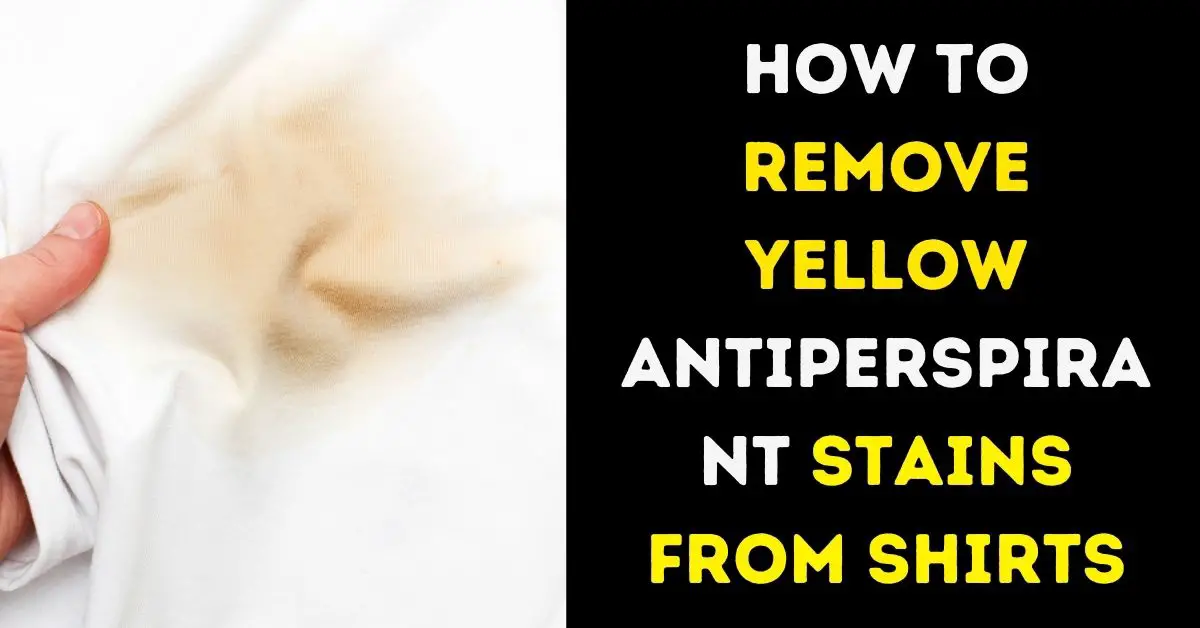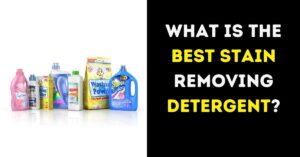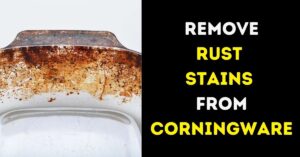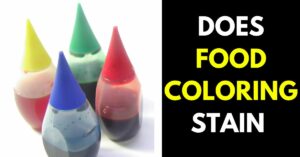
Yellow antiperspirant stains are a common headache for those who rely on this grooming essential. These stains, caused by a chemical reaction between antiperspirants and sweat, can ruin our favorite shirts and affect our confidence. Proper stain removal techniques are crucial to preserving the fabric and extending the lifespan of our clothes. In this post, we’ll explore effective methods and gentle remedies to tackle these stains, ensuring our shirts stay spotless and ready to wear. So, how to remove yellow antiperspirant stains from shirts?
Step-By-Step Guide on How to Remove Yellow Antiperspirant Stains from Shirts

Dealing with yellow antiperspirant stains requires a systematic approach to ensure effective and safe removal without damaging the fabric. Before diving into the stain removal process, follow these essential steps to prepare your garment properly:
Pre-treating the Stain
Pre-treating the stain is crucial to break down the buildup and loosen the discolored particles before washing. Here’s a step-by-step guide to the pre-treatment process:
Gathering Necessary Supplies
Before you begin, gather the following supplies:
- Baking soda
- White vinegar
- Old toothbrush or scrubber
Recommended Stain Removers
Two effective natural stain removers for antiperspirant stains are white vinegar and baking soda. These household items work together to create a potent cleaning solution for tackling the discoloration.
Checking the Care Labels and Fabric Compatibility
Before applying any stain remover, check the care labels on your shirt for specific washing instructions. Ensure that the chosen stain removal method is compatible with the fabric type to prevent any damage or color fading.
Effective Stain Removal Methods
Now that you have prepped your shirt, let’s explore three effective stain removal methods to banish those yellow marks:
Method 1: White Vinegar and Baking Soda
- Generously sprinkle baking soda on the area of the buildup.
- Lightly scrub the stain with a toothbrush or scrubber, working the baking soda into the fabric.
- Pour white vinegar directly on top of the baking soda, creating a cool eruption, bubbling, and gurgling reaction.
Why this method works: Baking soda acts as a gentle abrasive that helps lift the antiperspirant buildup, while white vinegar’s acidic properties dissolve and neutralize the stain, leaving your shirt cleaner and fresher.
Method 2: Lemon Juice and Salt
- Apply a mixture of equal parts water and lemon juice to the stain.
- Leave the garment in the sun for an hour to harness the natural bleaching effect of lemon juice and sunlight.
- Rinse the garment thoroughly and wash it as usual in your washing machine.
Benefits of using natural remedies: Lemon juice and salt are natural bleaching agents, making them effective at fading deodorant stains on light-colored clothing without using harsh chemicals.
Method 3: Hydrogen Peroxide
- Mix 3 tablespoons of dish soap with 6 tablespoons of hydrogen peroxide in a cup.
- Rub the solution into the stain using an old toothbrush.
- Let the garment sit for around an hour to allow the solution to work on the stain.
- Wash the clothing in cold water and let it air dry.
Precautions to consider: Hydrogen peroxide can act as a bleaching agent and may cause color fading on certain fabrics. Always do a patch test on a hidden area before applying it to the stained region.
By following these pre-treatment steps and effective stain removal methods, you can bid farewell to those pesky yellow antiperspirant stains and restore your shirts to their former pristine condition. Remember to handle delicate fabrics with extra care and take necessary precautions to maintain the longevity of your clothing. Now, it’s time to reclaim your confidence and enjoy a wardrobe free from unsightly stains!
Tips for Tough Stains and Delicate Fabrics
Dealing with tough antiperspirant stains and handling delicate fabrics requires finesse and a tailored approach. Here are some essential tips to help you tackle stubborn stains and care for delicate fabrics effectively:
Stubborn Stains: How to Handle Them
Even with the most diligent pre-treatment, some stains may still prove resistant. When faced with stubborn antiperspirant stains, consider the following strategies:
- Repeat Pre-treatment: If the initial pre-treatment doesn’t completely remove the stain, repeat the process before washing. Sometimes, persistence is the key to breaking down stubborn buildup.
- Spot Treatment: For particularly small and stubborn stains, focus on spot treatment rather than soaking the entire garment. Apply the stain remover directly to the affected area and gently work it in using a soft brush or your fingers.
- Extend Pre-soaking Time: Allow the garment to pre-soak in the stain remover solution for a longer period. This extra soaking time can help loosen the stain’s grip on the fabric.
- Try Commercial Stain Removers: In some cases, commercial stain removers formulated specifically for antiperspirant stains might offer additional strength. Look for products that are safe for your fabric type and follow the instructions on the label.
Delicate Fabrics: Special Care Instructions
Delicate fabrics demand extra TLC to ensure they remain unharmed during the stain removal process. Here are some special care instructions for handling delicate fabrics:
- Cold Water Washing: Use cold water instead of hot water for washing delicate fabrics. Hot water can weaken the fibers and cause color fading, especially in delicate materials like silk and lace.
- Gentle Detergents: Opt for mild, gentle detergents designed for delicate fabrics. Harsh chemicals can break down the fibers and reduce the garment’s lifespan.
- Hand Wash or Delicate Cycle: Consider hand washing delicate fabrics to maintain their integrity. If using a washing machine, use the delicate or gentle cycle to minimize agitation.
- Avoid Direct Sunlight: After washing, avoid drying delicate fabrics under direct sunlight, as UV rays can cause color fading and damage the fibers. Instead, air dry them in a shaded area or indoors.
With these tips, you can effectively combat tough antiperspirant stains while safeguarding the delicate fabrics in your wardrobe. A combination of patience, proper techniques, and extra care will help you maintain the beauty and longevity of your favorite garments, ensuring they stay stain-free and ready to make you look your best.
Preventing Antiperspirant Stains
Nobody wants to deal with the frustration of yellow antiperspirant stains on their favorite shirts. Fortunately, by taking some proactive steps, you can significantly reduce the likelihood of these unsightly stains. Let’s explore effective ways to prevent antiperspirant stains and keep your clothes looking fresh and stain-free.
Choosing the Right Antiperspirant
- Antiperspirant Formulation: Opt for antiperspirants that contain lower levels of aluminum-based compounds. These formulations are less likely to cause yellow stains compared to stronger varieties.
- Clear or Gel Formulas: Consider using clear or gel-based antiperspirants. These types tend to leave fewer residues on clothing, minimizing the chances of yellow stains.
- Roll-On or Spray: Roll-on or spray antiperspirants may be better choices as they often dry faster and have a lower risk of transferring onto clothing during application.
- Avoid White Residue: Some antiperspirants may leave a white residue on your skin and clothing. Look for products specifically labeled as “non-staining” to avoid this issue.
Applying Antiperspirant Correctly
- Dry Skin Application: Make sure your underarms are completely dry before applying antiperspirant. Applying it on damp or sweaty skin can lead to product buildup and stains.
- Moderate Application: Use the appropriate amount of antiperspirant—avoid excessive application, as it won’t provide better protection and might lead to more residue on clothes.
- Allow Drying Time: Let the antiperspirant dry completely before dressing to reduce the risk of transferring it onto your clothing.
- Reapply as Needed: If your antiperspirant’s effectiveness fades throughout the day, consider reapplying it instead of overusing it in the morning.
Alternative Clothing Options to Reduce Stains
- Dark-Colored Clothing: Choose dark-colored shirts, especially for days when you know you’ll be sweating more. Dark fabrics are less likely to show antiperspirant stains.
- Layering: Wear an undershirt or sweat-absorbing garment underneath your shirt to act as a barrier between your antiperspirant and the outer layer of clothing.
- Sleeveless or Cap-Sleeve Tops: Opt for sleeveless or cap-sleeve tops to minimize the fabric’s contact with your underarms, reducing the likelihood of stains.
- Natural Fibers: Select clothing made from natural fibers like cotton or linen, as they tend to be more breathable and allow sweat to evaporate, lessening the potential for stains.
Final Thoughts
By selecting the right antiperspirant and applying it correctly, we can avoid yellow stains on our shirts. Opt for formulations with lower aluminum levels, clear or gel-based options, and practice moderation in application. Additionally, wearing dark-colored clothing, layering with undershirts, and choosing natural fiber garments help minimize the risk of stains. With these simple steps, we can confidently maintain a clean and stain-free wardrobe, feeling fresh and self-assured every day.







